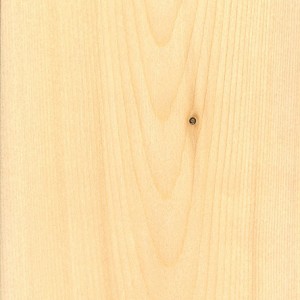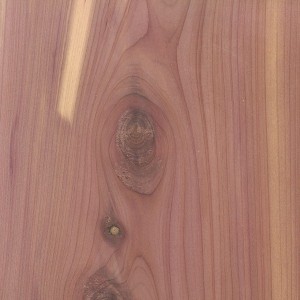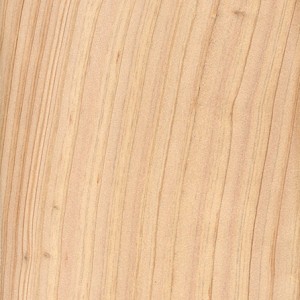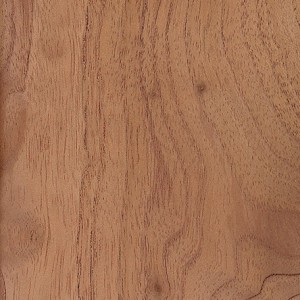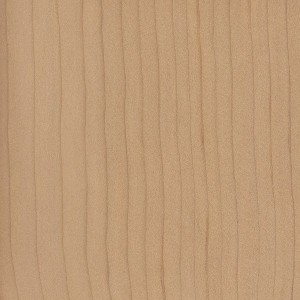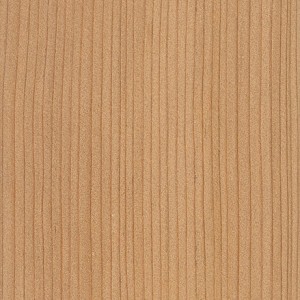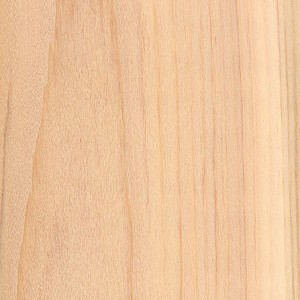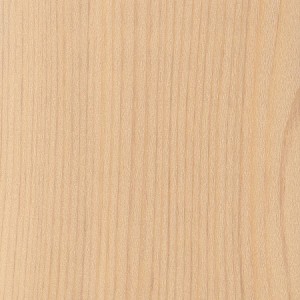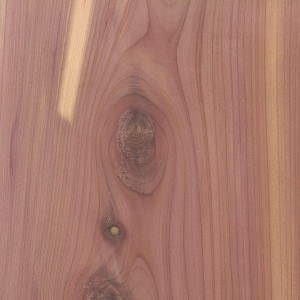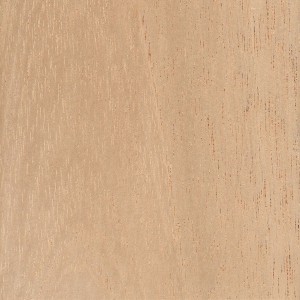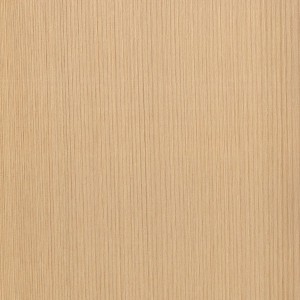The Cedar Family
| Scientific Name: | Cupressus nootkatensis |
| Location: | Northwest Coast of North America |
| Dried Weight: | 31lbs/ft3 |
| Janka Hardness: | 580lbf |
| Crushing Strength: | 6,310lbf /in2 |
Alaskan Cedar has a heartwood that is a light yellow color and a sapwood that is a similar whitish/pale yellow color. The color will darken with age and exposure to light. The grain is usually straight and it has a uniform medium to fine texture. The resin canals are absent. It is rated as durable to very durable in regards to decay. It is easy to work with and paints, stains, glues, and finishes well.
| Scientific Name: | Juniperus virginiana |
| Location: | eastern North America |
| Dried Weight: | 33lbs/ft3 |
| Janka Hardness: | 900lbf |
| Crushing Strength: | 6,020lbf /in2 |
Aromatic Cedar has a heartwood which is a reddish or violet brown color and a sapwood which is a pale yellow color. The grain is straight, but usually has knots, and it has a very fine even texture. The resin canals are absent. It has excellent resistance to decay and insects. It is easy to work with and glues and stains well.
| Scientific Name: | Chamaecyparis thyoides |
| Location: | Coastal plain regions of Eastern USA |
| Dried Weight: | 24lbs/ft3 |
| Janka Hardness: | 350lbf |
| Crushing Strength: | 4,700lbf /in2 |
Atlantic Cedar has a heartwood with a light reddish brown color and a narrow sapwood with a pale yellow to almost white color. The grain is straight and it has a fine uniform texture. The resin canals are absent. It is rated as durable to very durable in regards to decay. It is easy to work with and paints, stains, glues, and finishes well.
| Scientific Name: | Toona ciliata |
| Location: | Southern Asia and Australia |
| Dried Weight: | 30lbs/ft3 |
| Janka Hardness: | 700lbf |
| Crushing Strength: | 5,240lbf /in2 |
Australian Cedar has a heartwood ranging from a pinkish to darker reddish brown color, while the sapwood is a a paler version. The grain is usually straight to slightly interlocked and it has a coarse uneven texture. The wood gives off a good natural lustre. The end grain is semi-ring-porous. It is rated as moderately durable in regards to decay. It is easy to work with, but can exude resin which gums up cutters. The wood glues and finishes well.
| Scientific Name: | Cedrus libani |
| Location: | Mountainous areas of Mediterranean region |
| Dried Weight: | 32lbs/ft3 |
| Janka Hardness: | 820lbf |
| Crushing Strength: | 6,090lbf /in2 |
Cedar of Lebanon has a heartwood which is a cream to light reddish brown color and a narrow sapwood that is pale yellowish white color. The grain is generally straight and it has a medium to coarse texture. The wood gives off a moderate natural lustre. The resin canals are absent. It is rated as very durable in regards to decay. It is easy to work with and turns, glues, and finishes well.
| Scientific Name: | Calocedrus decurrens |
| Location: | Western North America |
| Dried Weight: | 24lbs/ft3 |
| Janka Hardness: | 470lbf |
| Crushing Strength: | 5,200lbf /in2 |
Incense Cedar has a heartwood that is light to medium reddish brown color and a sapwood that is light tan to off white in color. The grain is straight and it has a medium to fine uniform texture. The resin canals are absent. It is rated as durable to very durable in regards to decay. It is easy to work with and paints, stains, glues, and finishes well.
| Scientific Name: | Thuja occidentalis |
| Location: | Northeastern North America |
| Dried Weight: | 22lbs/ft3 |
| Janka Hardness: | 320lbf |
| Crushing Strength: | 3,960lbf /in2 |
Northern Cedar has a heartwood that is pale brown or tan in color and a sapwood that is narrow and nearly white in color. The grain is usually straight and it has a fine even grain. The resin canals are absent. The wood is rated as durable to very durable in regards to decay. It is easy to work with, but does possess poor screw holding properties. The wood glues and finishes well.
| Scientific Name: | Chamaecyparis lawsoniana |
| Location: | Pacific Northwest USA |
| Dried Weight: | 29lbs/ft3 |
| Janka Hardness: | 590lbf |
| Crushing Strength: | 6,080lbf /in2 |
Port Orford Cedar has a heartwood that is a light yellowish brown in color and a sapwood that is a pale yellow brown to almost white color. The grain is straight and it has a uniform medium to fine texture. The resin canals are absent. It is rated as durable to very durable in regards to decay. It is easy to work with and paints, stains, glues, and finishes well.
| Scientific Name: | Juniperus silicicola |
| Location: | Southeastern USA |
| Dried Weight: | 32lbs/ft3 |
| Janka Hardness: | 610lbf |
| Crushing Strength: | 6,570lbf /in2 |
No data available at this current time.
| Scientific Name: | Cedrela odorata |
| Location: | Central and South America |
| Dried Weight: | 29lbs/ft3 |
| Janka Hardness: | 600lbf |
| Crushing Strength: | 5,860lbf /in2 |
Spanish Cedar has a heartwood which is ligh pinkish to reddish brown in color. The color will darken with age. The grain is straight and it has a medium texture. The wood gives off a moderate natural lustre. The end grain ranges from ring-porous to diffuse-porous. It is rated as durable to moderately durable in regards to decay. It is easy to work with but it does have natural gum packets that can remain wet and ooze out onto surrounding surfaces. This makes the wood a challenge when sanding.
| Scientific Name: | Thuja plicata |
| Location: | Pacific Northwest USA and Canada |
| Dried Weight: | 23lbs/ft3 |
| Janka Hardness: | 350lbf |
| Crushing Strength: | 4,560lbf /in2 |
Western Redcedar has a reddish to pinkish brown color. It has a straight grain and a medium to coarse texture. The resin canals are absent. It is rated as durable to very durable in regards to decay. The wood is easy to work with and glues and finishes well. Staining can be challenging.
